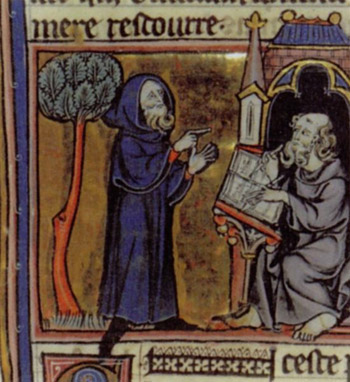Middle Ages 400 - 1400

illustration of Merlin from the Middle Ages
Bauerstune.net |
||||||||
| Home | World Music Drumming | Song Writing | Chorus | General Music | Adapted Music | Electronic Music | Theory | Photo Gallery |
Middle Ages 400 - 1400 |
||
| back |
|
|
 |
|
|
|
illustration of Merlin from the Middle Ages |
|
|
||
| The Middle Ages is also known as the Dark Ages. It was a time when most people were concerned with survival - shelter, food, clothing and safety. | ||
| In the Middle Ages there were three classes of people - the nobility, the clergy and the peasants . The nobility were rich landowners and the stories about kings, knights and lords are about this group. The second class was the clergy. The clergy was made up of priests - who worked in the church - and monks who lived in monateries. The third class - the peasants - was the largest group of people. They were poor farmers who worked for the nobility in exchange for protection from bands of robbers who traveled across the countryside. The life span of the average peasant was 30. | ||
| Sacred Music is music of the church. The church in the middle ages was central in the lives of all classses of people. Because the church was so important, so was its music. Sacred music in the Middle Ages was called Plainsong which is a single melody with Latin words. The words were part of the Roman Catholic Mass. Plainsong was simple which made it easy for people to hear and understand. the most common plainsong is the Gregorian chant named for Pope Gregory the First .Monks wrote plainsong on four line staves using neumes. Neumes are square notes with stems. The length of the stem tells the singer how long to hold the note. | ||
| Secular Music is non-religious music - music of the people. It was the popular music of the Middle Ages. Minstrels would go from castle to castle singing and doing tricks. Often their songs were stories about love, life and chivilry what was happening in other Kingdoms or Feifdoms. Again the melodies were simple so they could be easily understood. They were in the language of the people (not Latin) , were accoimpanied by a string or percussion instrument and were usually faster than sacred music. | ||